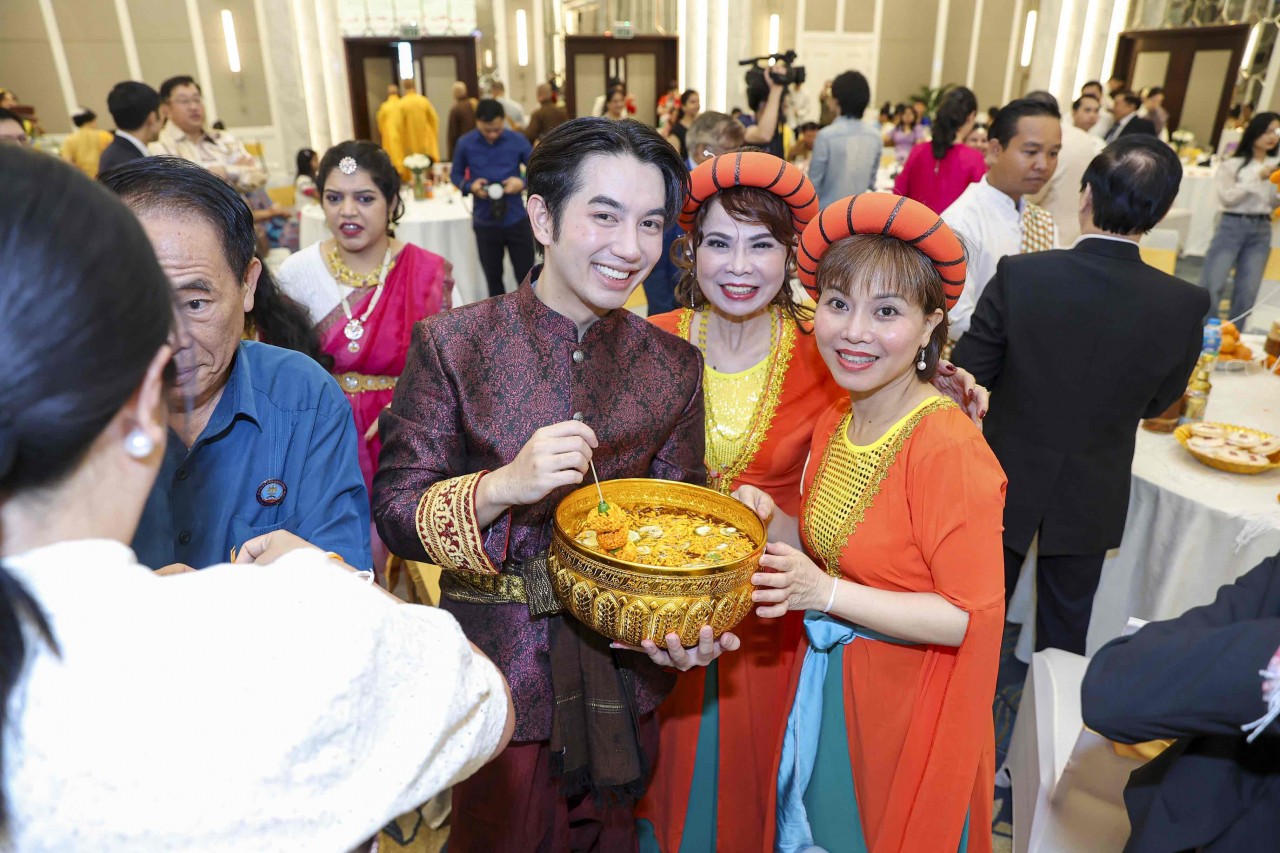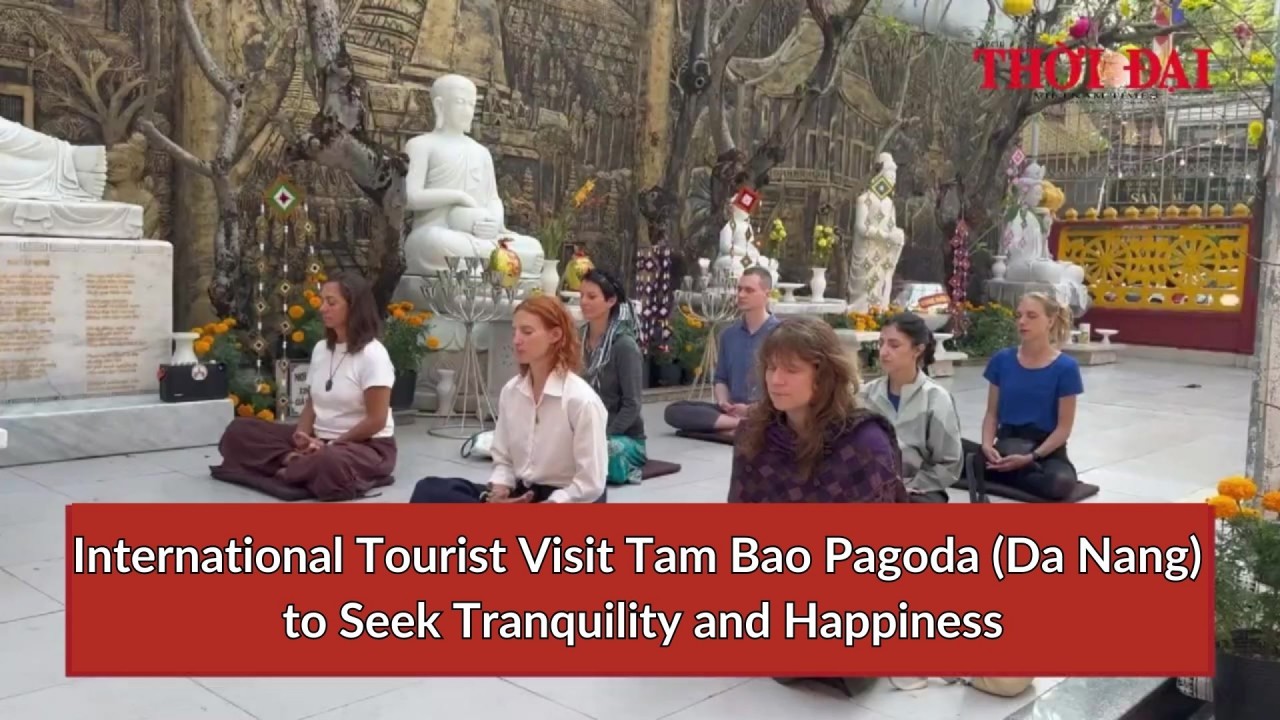20% of The World's Population to Celebrate Lunar New Year
Countries with traditions of celebrating the Lunar New Year and Asian diaspora communities are preparing as fully as possible for a new year with wishes of happiness and peace.
Lunar New Year, which follows the moon's phases and not the regular calendar, holds particular significance with its deep cultural and traditional roots. Families come together during this time to pay homage to their ancestors and embrace the arrival of spring. This year, the Lunar New Year kicks off on Saturday, Feb. 10.
Last year was the Year of the Rabbit (or Cat in Vietnam) and this year is the Year of the Dragon. In the Chinese Zodiac, there are 12 animals, each representing a year. Dragons are seen as charismatic, intelligent, and naturally lucky. For Thailand, however, 2024 is the Year of the Naga, a mythical serpent — per Royal Museums Greenwich.
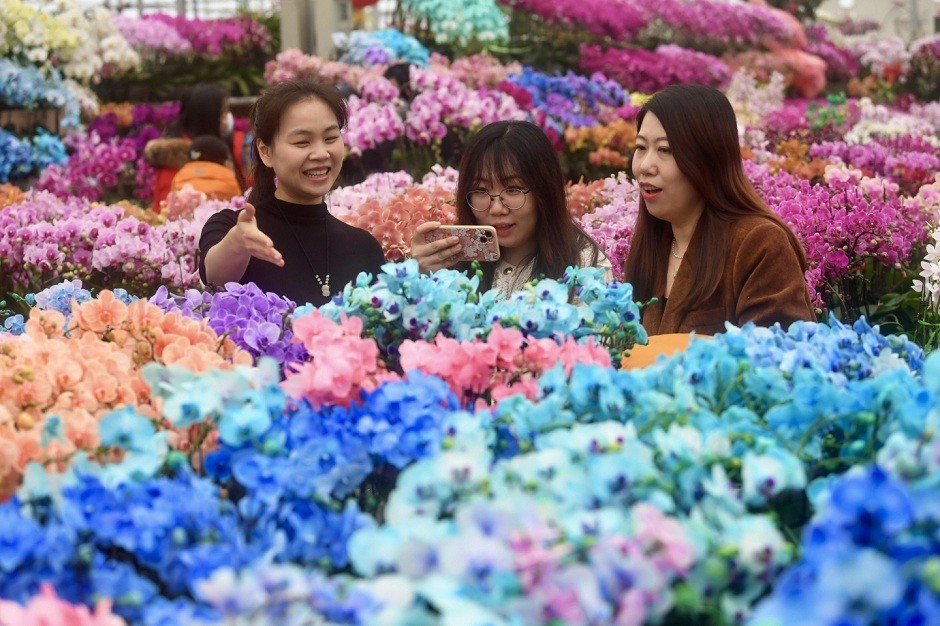 |
| Beijing Flower Markets are blooming with vibrant colors for the Lunar New Year. Source: China Daily |
In China, the lunar new year - is approaching in snow, freezing rain and frost. Traffic is congested in the Central and Eastern regions, while billions of people rush home before Tet.
China Central Television (CCTV) reported on February 6 that hundreds of trains were delayed or suspended and many passengers were stranded at railway stations in Wuhan city. The severe weather is expected to continue for several more days with widespread rain and snow forecast.
As the Spring Festival approaches, people across China start preparing delicious food and drinks to celebrate the New Year. In Taiwan (China), shoppers are flocking to one of the oldest commercial streets in search of traditional holiday gifts. They line up to buy spring couplets to ward off evil spirits and welcome the year of the Dragon.
Overseas communities celebrating the Lunar New Year around the world are also in a sprint to prepare for the Year of the Dragon. No matter where they settle, Tet is still a special tradition that they pass down from generation to generation. This year, the Lunar New Year of some Asian countries has been more widely honored around the world, when in December 2023, the United Nations General Assembly passed a resolution to make Lunar New Year a a United Nations floating holiday from 2024.
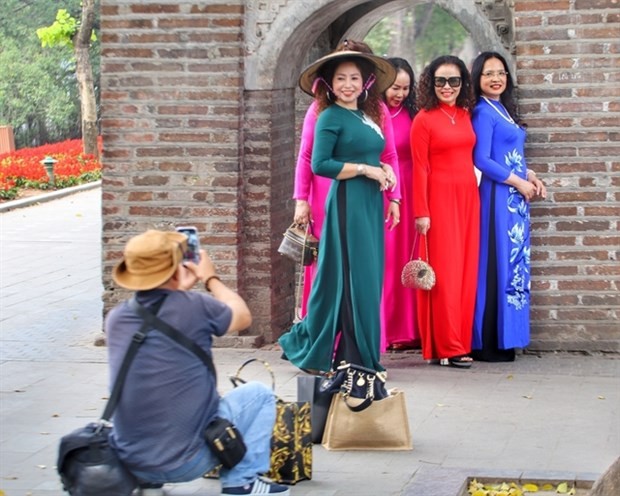 |
| Wearing ao dai to take photos ahead of the Tet holiday in Vietnam. (Photo: VNA |
In the US, the atmosphere to celebrate the Lunar New Year is bustling throughout neighborhoods where people of Asian descent live. Especially in states like New York and California, which have recognized Lunar New Year as a holiday, decorative dragon symbols appear in many locations.
San Francisco even displays a collection of 5 sculpted wooden dragon statues designed in 3D in a traditional and modern style to welcome the Lunar New Year 2024.
In Luxembourg, many street stalls display traditional Asian artworks including calligraphy and paper cutting as well as colorful souvenirs, attracting crowds of locals and tourists to share. Share the festive atmosphere.
The joy of welcoming the Lunar New Year is also spread through the parade and lion dance event at the park at the foot of the Burj Khalifa Tower in Dubai, United Arab Emirates. This is an opportunity for an Asian holiday to spread in the sunny and sandy land of the Middle East.
The festive atmosphere also takes place along the Champs-Elysees Avenue in Paris, France or in the distant country of Ethiopia, the colors of Lunar New Year have also spread everywhere.
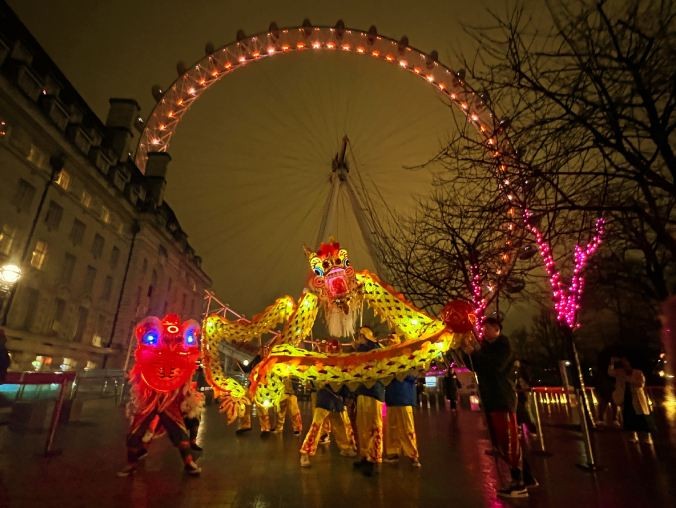 |
| Traditional Chinese dragon dancers perform in front of the London Eye which is lit up in red to celebrate the upcoming Chinese New Year in London on Feb 8. Photo by Xing Xue/ For China Daily |
Before that, people flocked to Chinatown in the capital Manila of Philippines, to attend the money tree lighting ceremony. The money tree is also known as the prosperity tree, a feng shui symbol often used to attract positive energy that brings wealth, luck, fortune, peace, and prosperity.
Chinatown in Manila has experienced 430 years of development, often organizing many activities such as lion dances and fireworks displays every Tet holiday.
Compared to Vietnam, Chinese people's customs of celebrating the Lunar New Year have many similarities such as welcoming New Year's Eve, giving red envelops or going to temple at the beginning of the year, but there are also certain differences. The traditional Chinese Lunar New Year is called "Spring Period", usually starting from December 23 and 24 until the Full Moon of January. Before Luner New Year festival, Chinese people often decorate their houses, post parallel sentences and the word blessing upside down on the front door.
The holiday's traditional dishes, which can include steamed whole fish, dumplings and spring rolls, often have a larger symbolic meaning (for example, tang yuan, or sweet rice balls, symbolize family togetherness). Of course, the meal itself also carries meaning.
A fish dish also is often served because the Chinese root word for fish sounds like 'surplus' which is symbolic for attracting prosperity. Meanwhile, noodles signify a long life so it is customary to leave them uncut.
Besides, with the development of food services, more and more Chinese families choose to eat New Year's Eve meals at restaurants to have more time together.
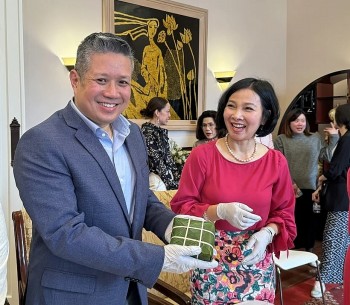 | ASEAN Spouses Event Bring Vietnamese’s Chung Cake To US The traditional Vietnamese Lunar New Year (Tet) and a Chung Cake-making activity were introduced at a recent meeting of the ASEAN Spouses Circle (ASC) held ... |
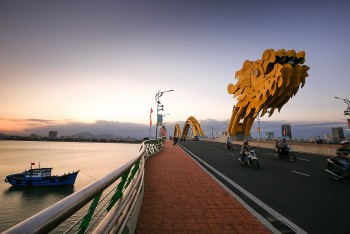 | Best Photo Ops to Celebrate the Year of the Dragon in Vietnam Dragon Bridge (Da Nang), Thuy Tien Lake Water Park (Thua Thien Hue), and Linh Quang Pagoda are the best tourist destinations with dragon images that ... |
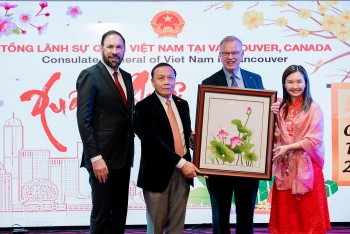 | Vietnamese Consul General Honored for Contributions to Vietnam-Canda Ties Senator Victor Oh, on behalf of the Senate of Canada and the Canada - Vietnam Friendship Parliamentary Group, has presented Vietnamese Consul General in Vancouver ... |
Recommended
 World
World
Thailand Positions Itself As a Global Wellness Destination
 World
World
Indonesia Accelerates Procedures to Join OECD
 World
World
South Korea elects Lee Jae-myung president
 World
World
22nd Shangri-La Dialogue: Japan, Philippines boost defence cooperation
 World
World
Pakistan NCRC report explores emerging child rights issues
 World
World
"India has right to defend herself against terror," says German Foreign Minister, endorses Op Sindoor
 World
World
‘We stand with India’: Japan, UAE back New Delhi over its global outreach against terror
 World
World

